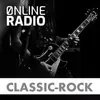Rock'n'roll Live Radio Stations
Radio Stations
- - 0 N - 50s on Radio

- - 0 N - 50s on Radio

- - 0 N - 60s on Radio

- - 0 N - 60s on Radio

- - 0 N - Gold on Radio

- - 0 N - Gold on Radio

- - 0 N - Oldies on Radio

- - 0 N - Oldies on Radio

- - 0 N - Schlager Gold on Radio

- - 0 N - Schlager Gold on Radio

- - 1 A - 60er von 1A Radio

- - 1 A - Oldies von 1A Radio

- - 1 A - Oldies von 1A Radio

- - 1 A - Schlager Gold von 1A Radio

- - 1 A - Schlager Gold von 1A Radio

- 0nlineradio CLASSIC ROCK

- 0nlineradio ROCK

- 0nlineradio SOFT ROCK

- 181.FM - Rock 40 (Rock && Roll)

- 89 Goiânia89 Goiânia
- ALWAYS ELVIS Radio

- Classic Rock Universal - Online - Grupo Radio Centro - Ciudad de México

- Free FM Rock Austral

- Joint Radio Blues RockJoint Radio Blues Rock
- La Dorada (Córdoba) - 107.5 FM - XHKG-FM - NTR Medios de Comunicación - Córdoba, VE

- La Dorada (Córdoba) - 107.5 FM - XHKG-FM - Radio Cañón / NTR Medios de Comunicación - Córdoba, Veracruz

- Laut.FM Teddyboys 1983

- Órbita 106.7 (Ciudad Juárez) - 106.7 FM - XHUAR-FM - IMER - Ciudad Juárez, CHÓrbita 106.7 (Ciudad Juárez) - 106.7 FM - XHUAR-FM...
- Pure Vintage Radio

- Radio Fórmula - 103.3 FM - XERFR-FM - Grupo Fórmula - Ciudad de México

- Radio Fórmula - 103.3 FM - XERFR-FM - Grupo Fórmula - Ciudad de México

- Radio Fórmula - 104.1 FM - XEDF-FM - Grupo Fórmula - Ciudad de México

- Radio Fórmula - 1470 AM - XEAI-AM - Grupo Fórmula - Ciudad de México

- Radio Fórmula - 1470 AM - XEAI-AM - Grupo Fórmula - Ciudad de México

- Radio Fórmula - 1500 AM - XEDF-AM - Grupo Fórmula - Ciudad de México

- Radio Fórmula - 970 AM - XERFR-AM - Grupo Fórmula - Ciudad de México

- Radio Fórmula - 970 AM - XERFR-AM - Grupo Fórmula - Ciudad de México

- Radio Fórmula - 970 AM - XERFR-AM - Grupo Fórmula - Ciudad de México

- Radio FurgoncinoRadio Furgoncino
- Radio Wombat

- ROCKANTENNE Rock'n'Roll (64 kbps AAC)

- WDGY 740, 92.1, 103.7 Hudson, WI

- WZXR 99.3 && 103.7 Williamsport, PAWZXR 99.3 && 103.7 Williamsport, PA
Choose a Genre
The radio station genre "rock'n'roll" refers to a format that plays music from the late 1940s to the mid-1960s, a period that is often referred to as the golden age of rock and roll. The focus is on playing hits from a variety of sub-genres, including rockabilly, doo-wop, rhythm and blues, and early rock and roll. The format is often chosen by radio stations that want to evoke nostalgia for the music of a bygone era and to celebrate the roots of modern rock music.
Rock'n'roll radio stations typically feature a mix of popular hits and lesser-known tracks from the genre's early years. The playlist may be updated occasionally to include more obscure or rare recordings, but the focus is on music from the golden age of rock and roll. The stations may also feature regular segments that highlight the biggest hits or the most popular artists of the era.
One of the main draws of a rock'n'roll radio station is the opportunity to hear music that defined a significant cultural era. For listeners who grew up during the 1950s and 1960s or who are fans of the music from that era, hearing songs that were popular during that time can bring back memories and evoke strong emotions.
In addition to playing music, rock'n'roll radio stations may also feature programming that is geared towards their audience. This may include interviews with artists who were popular during the era, trivia contests, and themed programming that focuses on particular sub-genres or artists.
Some of the most popular rock'n'roll radio stations in the United States include SiriusXM's '50s on 5 and '60s on 6 channels, and iHeartRadio's Classic Rock and Roll channel. These stations have large audiences and are often seen as reliable sources of entertainment and information for their listeners.
Overall, the rock'n'roll radio station format is a popular choice for music lovers who want to hear hits from a specific era and genre. It provides a sense of nostalgia for listeners who grew up during the golden age of rock and roll and want to relive that time period through music. The format also appeals to a broad demographic and is often chosen by radio stations that want to evoke a sense of cultural history and significance.
Rock'n'roll radio stations typically feature a mix of popular hits and lesser-known tracks from the genre's early years. The playlist may be updated occasionally to include more obscure or rare recordings, but the focus is on music from the golden age of rock and roll. The stations may also feature regular segments that highlight the biggest hits or the most popular artists of the era.
One of the main draws of a rock'n'roll radio station is the opportunity to hear music that defined a significant cultural era. For listeners who grew up during the 1950s and 1960s or who are fans of the music from that era, hearing songs that were popular during that time can bring back memories and evoke strong emotions.
In addition to playing music, rock'n'roll radio stations may also feature programming that is geared towards their audience. This may include interviews with artists who were popular during the era, trivia contests, and themed programming that focuses on particular sub-genres or artists.
Some of the most popular rock'n'roll radio stations in the United States include SiriusXM's '50s on 5 and '60s on 6 channels, and iHeartRadio's Classic Rock and Roll channel. These stations have large audiences and are often seen as reliable sources of entertainment and information for their listeners.
Overall, the rock'n'roll radio station format is a popular choice for music lovers who want to hear hits from a specific era and genre. It provides a sense of nostalgia for listeners who grew up during the golden age of rock and roll and want to relive that time period through music. The format also appeals to a broad demographic and is often chosen by radio stations that want to evoke a sense of cultural history and significance.